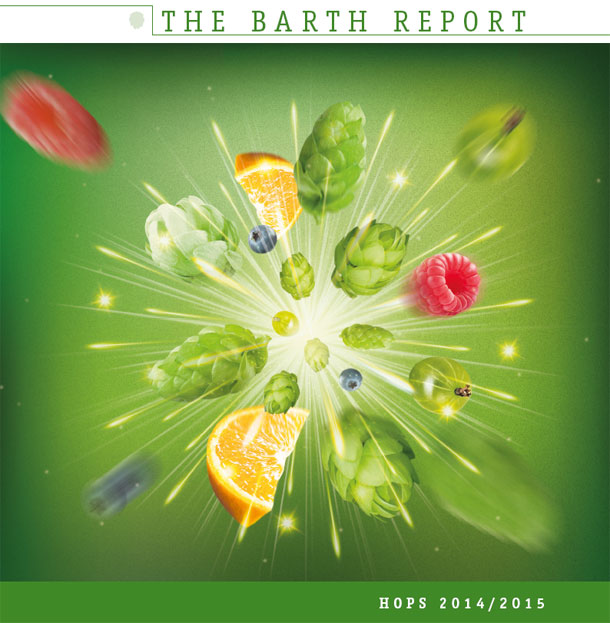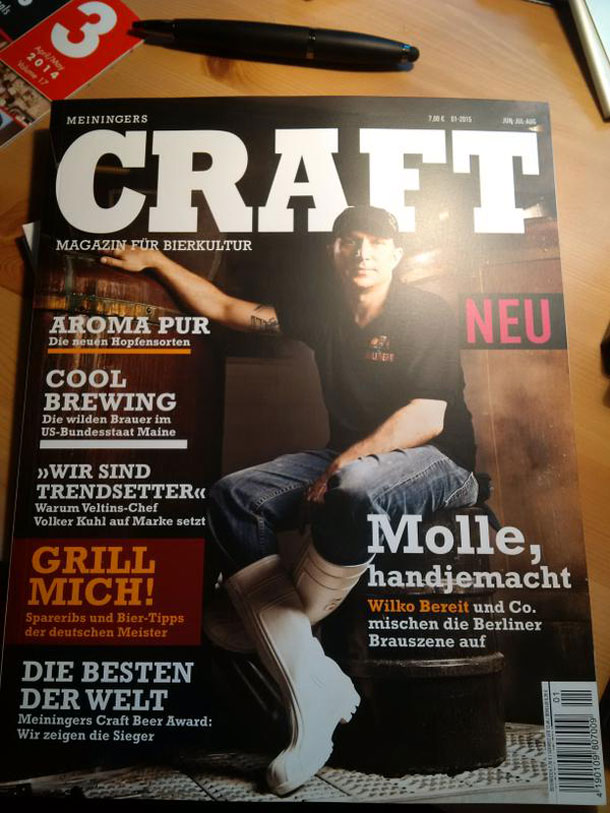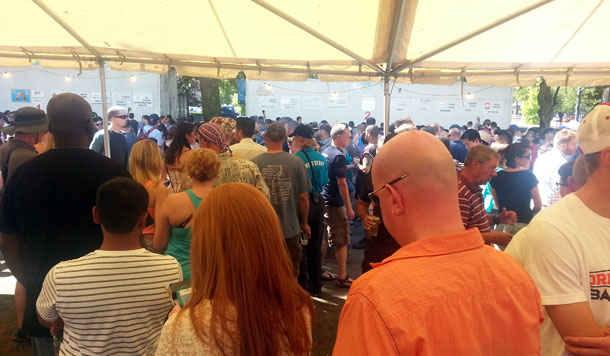MONDAY BEER LINKS, MUSING 07.20.15
While waiting for interesting posts that might result from the 2015 Beer Bloggers Conference in Asheville …
CRAFT Magazine – An embodiment of the German craft beer zeitgeist?
I posted a photo of the cover of this new magazine after Barry Masterson broadcast it via Twitter. He was followed up with this rather complete summary of what’s in the magazine. Now I really wanted to buy a beer from Wilko Bereit: “He wants to expand, but no more than 4000 HL a year, as he wants to stay micro. He uses only organic ingredients, but does not care for certification for his beers, as he just does it because he feels the beer tastes better, not to gain any marketing advantage. He and his partner talk to every one of their 70 customers selling their beers, as communication and partnership is key. But I do him a disservice. He don’t like using the craft label, at least in the German sense, as he considers it a term that is too, well, unthinking.” [Via The Bitten Bullett]
Smell your beer. Does it reek of gimmickry?
Joe Stange elaborates on his thoughts about “sincere beer” (linked here a couple of weeks ago). He poses a bunch of questions, and here are a few:
– Do you know where your beer is made? Are you sure?
– Is the label clear about the beer’s origins? Is it clear about the ingredients?
– If the beer is made locally, does the name include a foreign city?
– Any yeast in there? Is the beer alive, or merely embalmed by refrigeration?
– Would your grandpa have liked it? Do you think it might still be around for your own grandkids to try one day?
He also did some wondering out loud that I answered on Twitter: “That reminds me of one of the classic pieces of advice for writers, which I received as a young reporter: Imagine your reader. Name him. Talk to him. I wonder if many brewers imagine their drinker.” On Thursday the answer was Nathan Zeender at Right Proper in DC, and on Friday it was Rod Murray the The Public House down the road in Rolla. I’m pretty sure I could crank out one a day for a very long time. [Via DRAFT]
Beer with a Sense of Place.
One convert at a time. [Via The Public]
Tapped in: Craft and local are powerful trends in the beer aisle.
“According to a recent Nielsen study of craft beverage alcohol conducted online by Harris Poll, 35% of adults 21 and older say they’re more interested in trying an adult beverage labeled craft. Among men 21-24, that figure jumps to 46%. But craft can often mean different things to different consumers. Overall, most people who buy alcohol are most likely to associate the term with three main traits as it relates to alcoholic beverages: a) coming from a small, independent company (56% of people surveyed); b) part of a small batch (50%); c) handcrafted (43%).
And, “22% of beer drinkers said they think the importance of being made locally has grown over the last couple of years, compared with 14% of wine drinkers and only 5% of spirit drinkers.” [Via Nielsen]
Pabst will brew beer again in Milwaukee at site of historic brewery.
Not to be a curmudgeon — after all, I’m a sucker for a feel good story and like the idea of Pabst actually making some of its own beer, brewing it the city where it was born, tapping into historic recipes — but the brewery and tasting room will have five to 10 employees. When Pabst closed its Milwaukee brewery in 1996 it eliminated the last 250 jobs. In the 1960s, according to The New York Times, there were thousands of brewery workers in the local union (that included workers at several other breweries). [Via Milwaukee Journal Sentinel]
PBR is dead.
Not so sure about this, but an interesting companion to the story above. Plus, for this line “Not only did the new beer (Narragansett) lack the metallic aftertaste of PBR, it exuded authenticity rather than irony.” [Via NY Post]
Toppling Goliath brewery puts Decorah Iowa on the beer map.
“Taproom manager Todd Seigenthaler estimated that 80 percent of the people who walk through the doors of Toppling Goliath’s taproom are out-of-towners.” And it’s not liking getting to Decorah is easy. Interesting report about how beer tourists (and Internet noteriety) have created interest among local in their hometown brewery. The story really should have included the rather public dispute between owner Clark Lewery and brewer Mike Saboe, who wrote the recipes for what turned out to be a silly number of cult beers. Saboe left the brewery in February and did not return to brew until last month.
[Via Chicago Tribune]
Tasting notes are really bad, aren’t they?
If this is true for wine it is likely true for beer. “Tasting notes scare people away from wine.” [Via jamie goode’s wine blog ]


